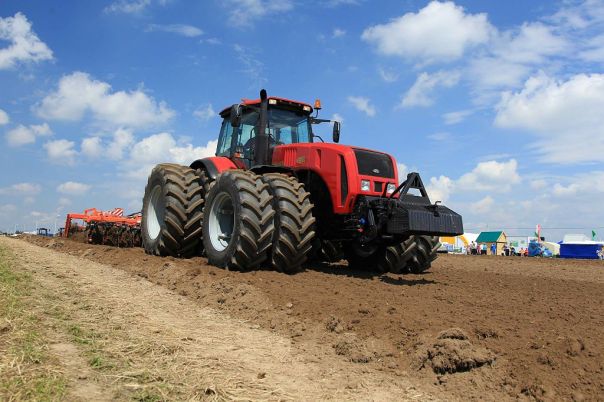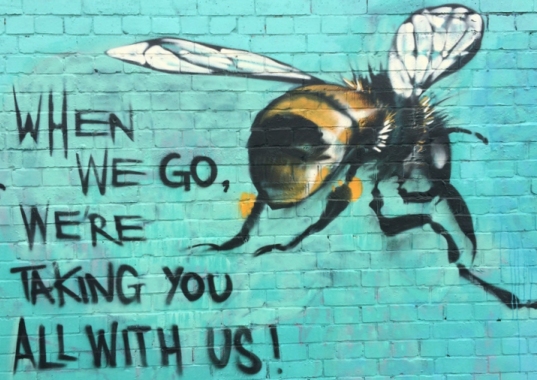#PoisonousGreenBelt
Written for a housing policy forum. Part 6
We pollute the countryside
The countryside is not as clean and green as it seems. In part 2, I noted the large carbon footprint of modern non-organic agriculture, particularly the methane emitted by ruminants (cows, sheep, goats &etc.) and the use of nitrogen compounds derived from the energy intensive Harber Bosh process. I also discussed the carbon footprint of “modern”, non-organic, food production but there are other unwelcome impacts. Three of these:
- Loss of soil fertility
- Insectageddon
- The nitrate time bomb
Soil fertility

The Guardian reported Michael Gove’s speech at the parliamentary launch of the Sustainable Soils Alliance
“We have encouraged a type of farming which has damaged the Earth. Countries can withstand coups d’état, wars and conflict, even leaving the EU, but no country can withstand the loss of its soil and fertility.
If you have heavy machines churning the soil and impacting it, if you drench it in chemicals that improve yields but in the long term undercut the future fertility of that soil, you can increase yields year on year but ultimately you really are cutting the ground away from beneath your own feet. Farmers know that.”
Insectageddon

In October 2017 George Monbiot wrote in Insectageddon:
“The impact on wildlife of changes in farming practice (and the expansion of the farmed area) is so rapid and severe that it is hard to get your head round the scale of what is happening. A study published in October 2017 reveals that flying insects surveyed on nature reserves in Germany have declined by 76% in 27 years. The most likely cause of this Insectageddon is that the land surrounding those reserves has become hostile to them: the volume of pesticides and the destruction of habitat have turned farmland into a wildlife desert.”
The nitrate time bomb
In November 2017, the BBC’s Roger Harribin reported:
“Huge quantities of nitrate chemicals from farm fertilisers are polluting the rocks beneath our feet, a study says. Researchers at the British Geological Survey say it could have severe global-scale consequences for rivers, water supplies, human health and the economy.
They say the nitrate will be released from the rocks into rivers via springs.
That will cause toxic algal blooms and fish deaths, and will cost industry and consumers billions of pounds a year in extra water treatment.”
Pollution and golf

Golf courses use more herbicide than insecticide, so may have a lesser effect on “insectageddon” than that of the use of insecticides in farming. However, two of the commonly used chemicals are Glycophosphate , a herbicide, and 2,4-D , an insecticide. Both of these have raised concerns about being carcinogenic.
In Environmental Impacts by Golf Courses and Strategies to Minimize Them: State of the Art, Guzmán and Fernández write
“It is clear that the effects of pesticides on the hydrological system generate negative impacts on the environment and populations as they can have a direct impact on aquatic life, food chains, potential uses of the water bodies when losing quality and hence its benefit for the purification and many other purposes.”
However, some golf clubs, like Rockland Country Club in New York, have been trying to reduce pesticide use on its course since the late ’90s, but the transition has been a tough sell to some players.
“At one point, Matt Ceplo, course superintendent, set up educational displays in the clubhouse. He wanted to teach members about protecting plants and wildlife from pesticides on the sprawling 140-acre property in Sparkill, just north of New Jersey.”
Houses, with gardens and public open spaces, can provide favorable habitats for wildlife species, while polluting golf courses and farms are allowed to occupy land when much needed houses are denied?
Summary: We pollute the countryside.
Postscript: From my old website Greening the green belt (2003)
Modern agriculture is high in chemical and other inputs. At the British Association, Dr Keith Porter of English Nature said low-density developments with gardens and public open spaces would provide more favorable habitats for species than the giant pesticide-treated cereal fields that dominate much of the countryside now.
“By placing housing in these areas with innovative designs you can build in the corridors and the linkage the wildlife need to come back in,” he said. “You would be certain to increase biodiversity.”
Indeed, a square kilometer of central London has significantly more bird species than a square kilometer of farmed land in Surrey. And, of course, many brownfield sites have significant amounts of wildlife.
A search for solutions
Using more labour on the land can increase food production without the poisioning of the land or the destruction of soil fertility, which happens in the much modern farming. A good example is Singing Frogs Farm in California. In the Q&A of their website they say:
We are not certified organic. Organic farming allows for the use of toxic organic pesticides, organic herbicides, and organic fungicides. While they generally don’t cause harm to us humans, these organic sprays are very detrimental to pollinators, especially bees, as well as to the entire community of beneficial insects in an ecosystem. Organic pesticides still kill indiscriminately, just like conventional pesticides! We practice what is often termed “Beyond Organic,” or “Organic 2.0.”
There are also permaculture solutions like Sepp Holzer or Geoff Lawton.